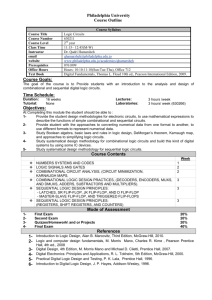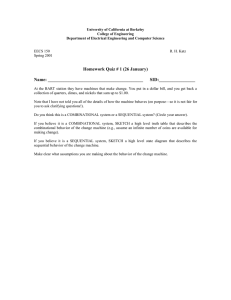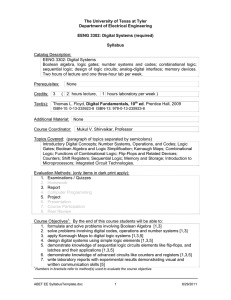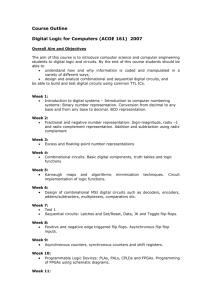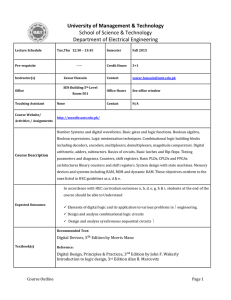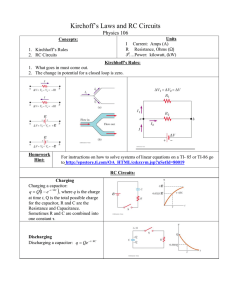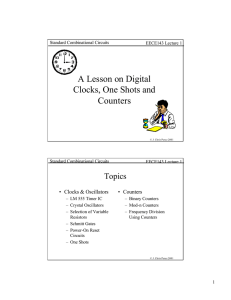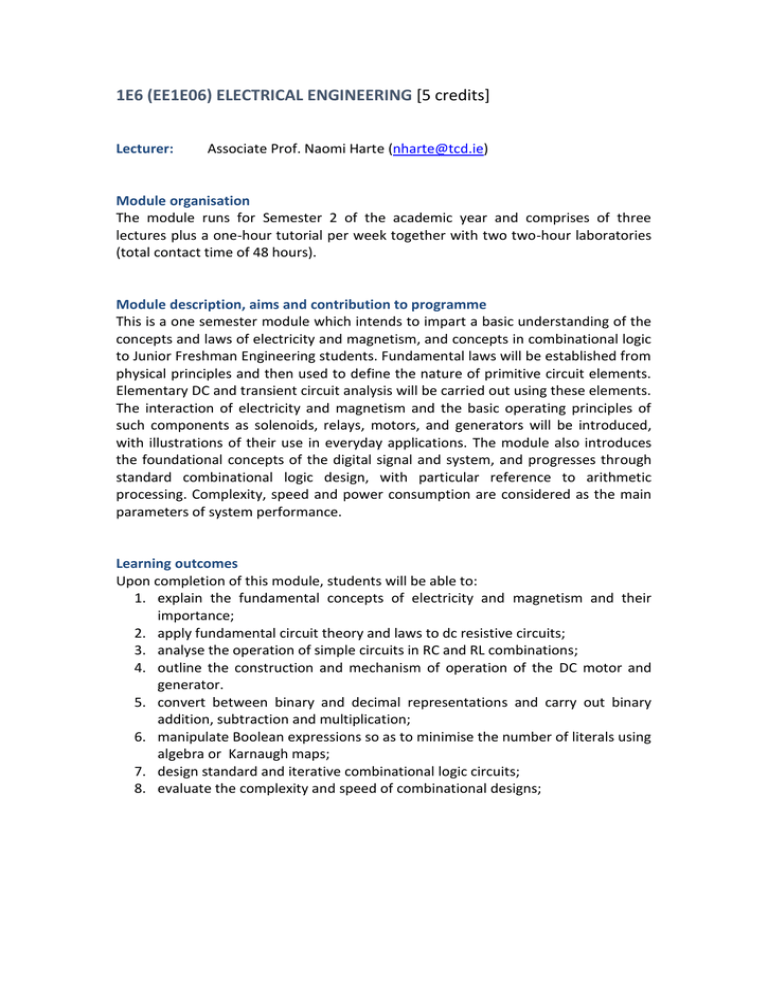
1E6 (EE1E06) ELECTRICAL ENGINEERING [5 credits]
Lecturer:
Associate Prof. Naomi Harte (nharte@tcd.ie)
Module organisation
The module runs for Semester 2 of the academic year and comprises of three
lectures plus a one-hour tutorial per week together with two two-hour laboratories
(total contact time of 48 hours).
Module description, aims and contribution to programme
This is a one semester module which intends to impart a basic understanding of the
concepts and laws of electricity and magnetism, and concepts in combinational logic
to Junior Freshman Engineering students. Fundamental laws will be established from
physical principles and then used to define the nature of primitive circuit elements.
Elementary DC and transient circuit analysis will be carried out using these elements.
The interaction of electricity and magnetism and the basic operating principles of
such components as solenoids, relays, motors, and generators will be introduced,
with illustrations of their use in everyday applications. The module also introduces
the foundational concepts of the digital signal and system, and progresses through
standard combinational logic design, with particular reference to arithmetic
processing. Complexity, speed and power consumption are considered as the main
parameters of system performance.
Learning outcomes
Upon completion of this module, students will be able to:
1. explain the fundamental concepts of electricity and magnetism and their
importance;
2. apply fundamental circuit theory and laws to dc resistive circuits;
3. analyse the operation of simple circuits in RC and RL combinations;
4. outline the construction and mechanism of operation of the DC motor and
generator.
5. convert between binary and decimal representations and carry out binary
addition, subtraction and multiplication;
6. manipulate Boolean expressions so as to minimise the number of literals using
algebra or Karnaugh maps;
7. design standard and iterative combinational logic circuits;
8. evaluate the complexity and speed of combinational designs;
Module content
Simple DC circuits
Resistors in series and parallel; Kirchhoff’s voltage and current laws; power
dissipation; the ideal voltage source and current source; maximum power
transfer; the ideal capacitor, permittivity; the multi-plate capacitor, variable
capacitor; capacitor charging and discharging, current-voltage relationship, timeconstant, rise-time, fall-time; inductor energisation and de-energisation,
inductance current-voltage relationship, time-constant
Electromagnetism
Electromagnetic induction, Fundamental relations, Faraday’s law, Lenz’s Law,
simple applications: solenoids and relays
Motors and Generators
The simple DC motor, construction, energy transfer, applications, the simple DC
generator, reversal of energy transfer, emf-speed relationship, applications.
Digital Systems and Binary Numbers
Digital signals and systems
Number systems
Positive/negative representation
Binary arithmetic
Boolean Algebra
Definitions and basic theorems
Algebraic simplification
Sum of products and product of sums formulations
Gate primitives
Karnaugh maps
Combinational Logic
Combinational design
Assessment of complexity and speed
Code converters, multiplexors, decoders
Addition circuits, priority encoder
Teaching strategies
The module is taught using a combination of lectures, tutorials and two supporting
laboratories. The tutorials will develop students problem-solving skills by tackling
problems based on the lecture material.
Associated laboratory/project programme
Lab 1 TBA
Lab 2 TBA
Assessment
The formal written end-of-year two-hour examination will contribute 80% and the
continuous assessment with quizzes and laboratory work will contribute 20% of the
overall module mark at the Annual Examination. For the Supplemental (Repeat)
Examination, in August, the mark is based solely on a written two-hour examination.
Recommended textbook
Electrical and Electronic Technology, Hughes, 9th edition, Pearson, Prentice-Hall,
2005
Digital Design, 5th edition, MM Mano and MD Ciletti, Pearson, Prentice Hall, 2013
Further information
http://www.tcd.ie/Engineering/undergraduate/baiyear1/modules/1E6.pdf

